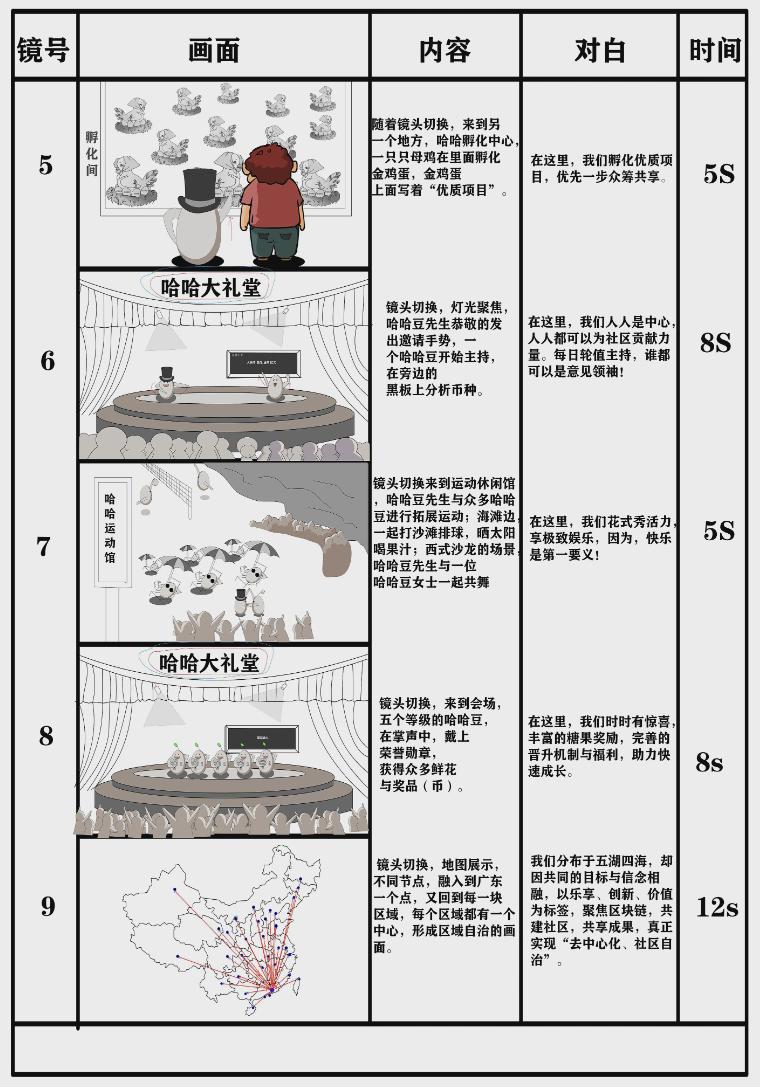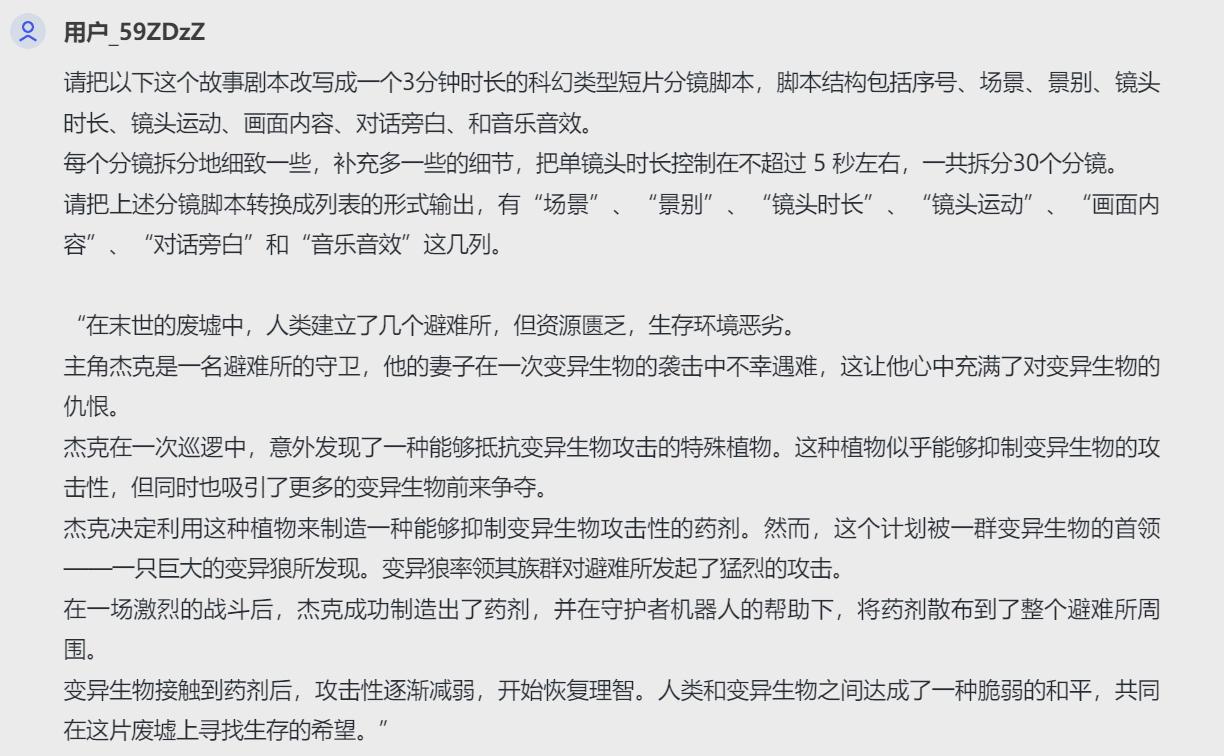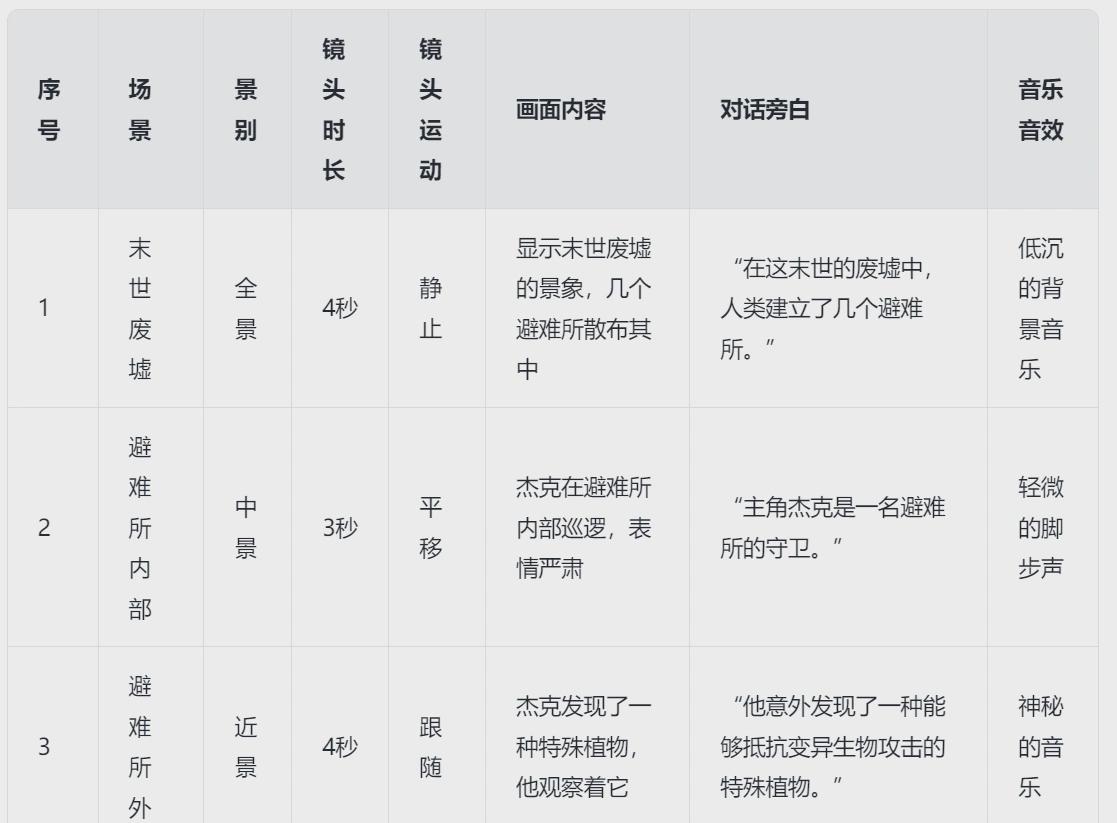The process of writing a story is called screenwriting.
After we write a story, we need to break down the whole story into sub-scenes scripts, each corresponding to one to many shots, so as to help conceptualize the picture. Then in the traditional era, a split-scene sheet is very laborious to create. Such as the diagram on the internet:

A score sheet is a key tool in film and television production, used to convert a written script into a visualization. It contains information such as shot numbers, expected frames, content dialogue, sound effects, and shot durations, thus making the entire video production process clearer and more organized.
In the script, each shot is labeled in detail in terms of camera movement, character dialog, sound effects and special effects, etc., so that the production team can better understand the director's specific requirements. At the same time, the time required for each shot and the number of drawings will also be recorded on the right side of the script.
Score sheet is not only the director's construction blueprint, but also the basis for each department of animation production to understand the director's intention and unify the creation. By using the script, the production team can better grasp the general outline of the work, and concretize and visualize the life scenes, character behaviors and character relationships in the script.
Although the split-screen schedule plays a crucial role in the production process, in the actual shooting process, the director's inspiration sometimes disrupts the original shooting plan, thus bringing unexpected rewards to the movie. This is where the charm of movie art lies.
In the age of AI, we certainly want to use AI tools to efficiently create a score sheet with the following cue words:
Please rewrite the following story script into a xxx hour long xxx genre short film split screen script with a script structure that includes serial number, scene, location, shot duration, camera movement, screen content, dialog narration, and music sound effects.Split each scene into more detail, add more details, and keep the length of a single shot to no more than 5 seconds or so, splitting xx subplots in total.Please convert the above script into a list with the columns "Scene", "Scenery", "Duration", "Motion", "Content", "Dialog Narrator" and "Music Sound Effects". "Scene", "Scenery", "Duration", "Motion", "Content", "Dialog Narrator" and "Music".
For example, we have a story like this:
In the ruins of the post-apocalyptic world, mankind has established several shelters, but resources are scarce and survival is harsh.The protagonist, Jack, is a guard at the refuge, and his wife was tragically killed in an attack by mutant creatures, which fills his heart with hatred for mutant creatures.During one of his patrols, Jack accidentally discovers a special plant that can resist the attacks of mutant creatures. The plant seems to be able to inhibit the aggressiveness of the mutant creatures, but at the same time, it attracts more mutant creatures to fight for it.Jack decides to use this plant to create a potion that can inhibit the aggressiveness of mutant creatures. However, this plan was discovered by the leader of a group of mutant creatures - a giant mutant wolf. The mutant wolf leads its pack in a fierce attack on the refuge.After a fierce battle, Jack succeeds in creating the potion and, with the help of the Guardian robots, spreads it around the entire sanctuary.After the mutant creatures came into contact with the potion, their aggressiveness gradually diminished and they began to regain their sanity. A fragile peace was reached between the humans and the mutant creatures, and together they searched for the hope of survival in these ruins.
At this point we handed the story over to GPT for a quick break down into the mirroring script.

At this point, the GPT will organize the subplot scripts in a tabular format.

The screenshot is too long, I'll take it in segments here.

This is when the split script comes out, and you can take this split script and put it into a multi-dimensional form in the Flying Book to make it easier for people to co-create together.
If you can produce graphics and video for the content and scenery, music for the sound effects and narration, and editing for the story, you'll be much more efficient and organized.